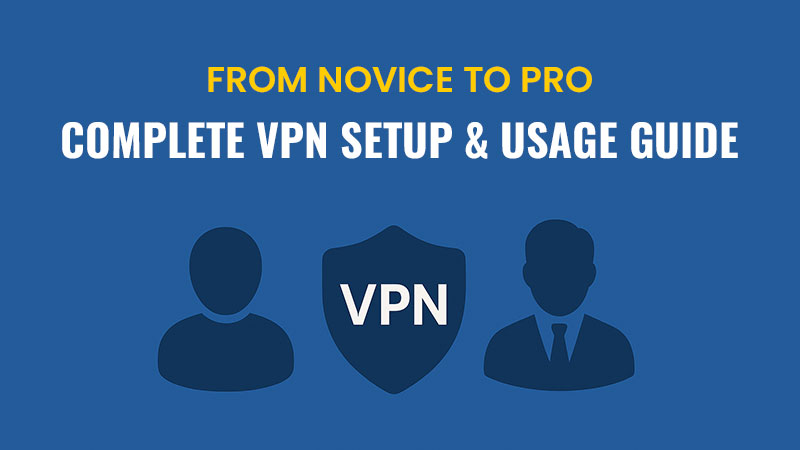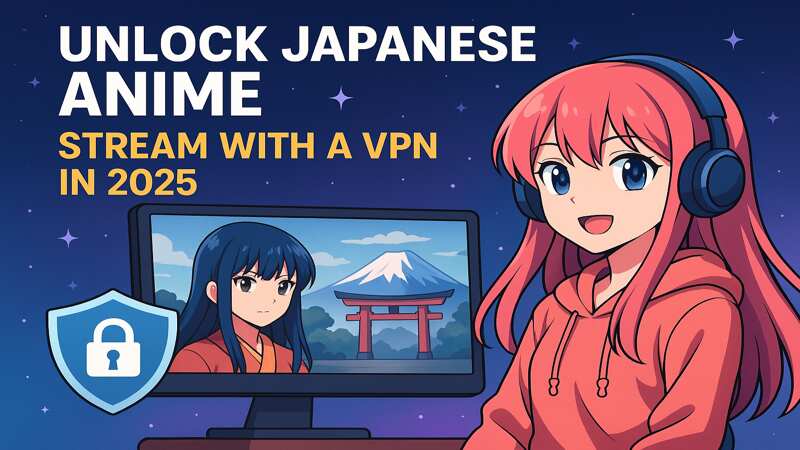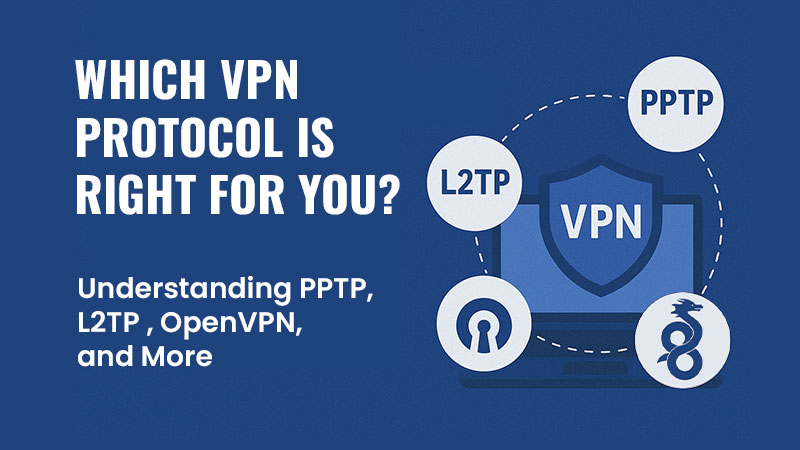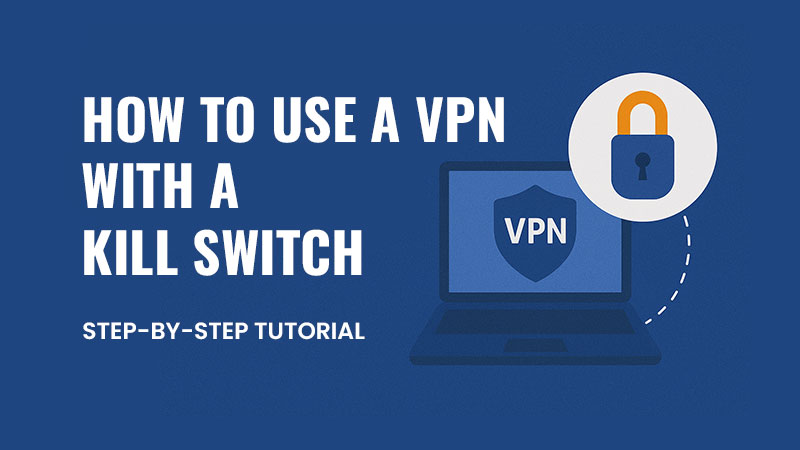As cyber threats grow, protecting your online privacy is more important than ever. A proper VPN setup can help shield your personal data from hackers, identity theft, and surveillance. Whether you’re using public Wi-Fi, accessing work files remotely, or just browsing privately, a Virtual Private Network (VPN) offers strong protection. This complete VPN guide covers everything from basic VPN setup to advanced tips and usage strategies—perfect for both beginners and experienced users.
What is a VPN?
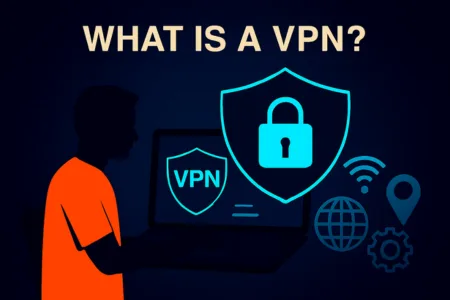
A Virtual Private Network (VPN) is a powerful online security tool that creates a secure, encrypted tunnel between your device and the internet. By doing so, a VPN ensures that your internet traffic remains private and hidden from hackers, advertisers, and even your internet service provider (ISP). When you connect to a VPN, your real IP address is masked and replaced with the IP address of the VPN server, allowing you to appear as if you are browsing from a different location.
VPNs are commonly used for various purposes, including securing public Wi-Fi connections, accessing region-restricted content, and protecting sensitive information during online transactions. They are essential for both personal and professional use, especially in an era where digital privacy is constantly under threat. With a VPN, users can confidently browse, stream, and communicate online without the fear of surveillance or data theft. Whether you are new to VPNs or exploring more advanced features, understanding the core benefits of a VPN is the first step toward safer internet usage.
How to Set Up and Use a VPN - Complete Guide
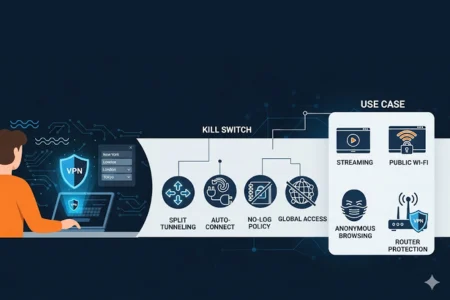
If you’re looking for a VPN for beginners, setting up a VPN is simpler than you might think. Here’s a step-by-step VPN setup guide to get you started:

- 9.8
- The fastest and most reliable VPN on the market

- 9.5
- Low-cost VPN offering unrestricted device usage

- 8.2
- Affordable new VPN launched by top industry professionals
Choose a Reliable VPN Provider
Look for key features:
- Strong encryption protocols (OpenVPN, WireGuard)
- No-log policy
- Fast servers across multiple countries
- User-friendly apps for your devices
Popular VPNs include NordVPN, ExpressVPN, and Surfshark.
Sign Up and Download the App
- Visit the VPN provider’s official website.
- Create an account.
- Download and install the VPN app on your device (Windows, Mac, iOS, Android).
Login and Connect
- Open the app and sign in.
- Select a server location.
- Select ‘Connect’ to begin encrypted VPN tunneling.
Pro Tip: For faster speeds, choose servers closer to your physical location
Best VPN Tips for Everyday Users to Stay Safe Online
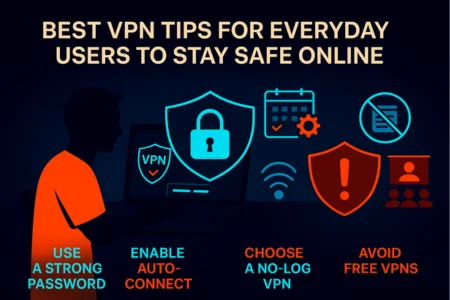
Once your VPN is running, keep these VPN tips in mind:
- Enable Kill Switch: If the VPN disconnects, your internet connection is automatically severed to prevent IP exposure.
- Use Split Tunneling: Allows you to route some apps through the VPN while others use your regular connection.
- Test for IP & DNS Leaks: Use online tools to ensure your VPN is properly hiding your real IP address.
Following these VPN usage tips will help you maintain strong online privacy.
Advanced VPN Configurations for Pro Users
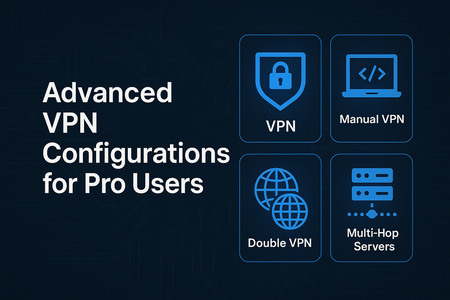
For those ready to take their VPN experience to the next level, consider these VPN advanced settings:
Manual VPN Setup
- Configure OpenVPN or WireGuard manually on routers or devices for broader protection.
- Supports VPN protection for systems lacking software-level compatibility.
VPN on Routers
- Installing a VPN directly on your router secures all devices on your home network automatically.
- Best for families or smart homes.
Double VPN & Multi-Hop Servers
- Your connection passes through two VPN servers for added protection.
- Best suited for individuals who prioritize maximum privacy, including investigative professionals and advocates
Common VPN Mistakes to Avoid
Avoid these common VPN mistakes to ensure maximum security and performance:
- Using Free VPNs: They tend to undermine privacy and offer subpar performance.
- Connecting to Distant Servers Unnecessarily: This can slow down your internet speed.
Ignoring Software Updates: Regular updates fix security vulnerabilities and improve performance.
Final Thoughts on Setup, Use, and Best Practices
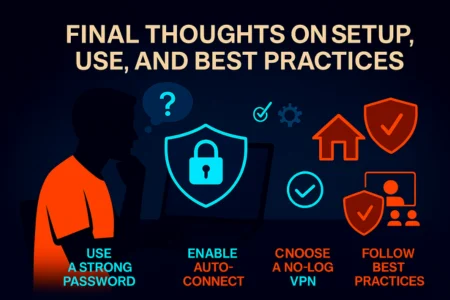
Whether you’re a VPN novice or looking to master VPN advanced settings, understanding VPN Setup and VPN usage is important for safe, unrestricted internet browsing. VPNs have evolved into indispensable tools for both individuals and businesses, helping users protect their digital footprints, access global content, and maintain privacy in an increasingly monitored online environment.
As you progress from Basic VPN configurations to more complex setups, you’ll gain the skills to fully leverage the power of a VPN for various purposes, such as securing public Wi-Fi, bypassing censorship, and even protecting your entire home network. A VPN is no longer just a tool for tech experts – it is a must-have for anyone who wants control over their online security and freedom.
Learning to avoid common VPN mistakes, selecting the right VPN provider, and understanding how different settings impact your browsing experience will empower you to make smarter, safer decisions online. Whether you’re streaming, gaming, working remotely, or simply browsing, a VPN provides peace of mind in every digital interaction. Starting with a reliable provider, learning the basics, and gradually exploring advanced features will help you maximize both security and functionality.
Frequently Asked Questions (FAQs)
Why is a VPN used in digital communications?
VPNs protect your digital activity by hiding your IP and encrypting internet traffic. It allows you to browse the internet securely and access region-restricted content.
Is a VPN difficult to set up for beginners?
No, most modern VPNs are designed with user-friendly interfaces, making VPN setup easy for beginners. Typically, it involves downloading the app, logging in, and connecting to a server with just a few clicks.
Can connecting through a VPN affect network performance?
Yes, “VPNs can introduce minor speed reductions as traffic is encrypted and redirected through secure servers. To minimize this, choose nearby servers and reliable VPN providers known for high-speed performance.
Are free VPNs safe to use?
Free VPNs typically offer limited performance, fewer server options, and may compromise your privacy by logging data or serving ads. Choosing a reputable paid VPN service typically ensures better privacy and dependable performance.
Is one VPN enough for all my devices?
Yes, most VPN providers allow simultaneous connections on multiple devices, including smartphones, tablets, laptops, and routers. Some services even offer unlimited device connections.
How can I avoid common VPN mistakes?
To avoid VPN mistakes, ensure you:
- Use trusted, premium VPN services.
- Connect to nearby servers for better speed.
- Regularly update your VPN software.
- Turn on Kill Switch and DNS leak safeguards to secure your connection
Which advanced VPN options are available, and when is it appropriate to use them?
VPN advanced settings include options like manual configuration, double VPN, split tunneling, and using VPN on routers. These settings are beneficial for users needing enhanced privacy, custom routing, or network-wide protection.
Is it possible to access streaming platforms with a VPN?
Yes, many VPNs can bypass geo-restrictions, allowing you to access streaming libraries from other countries. Choose VPN providers recognized for consistent access to streaming platforms.

